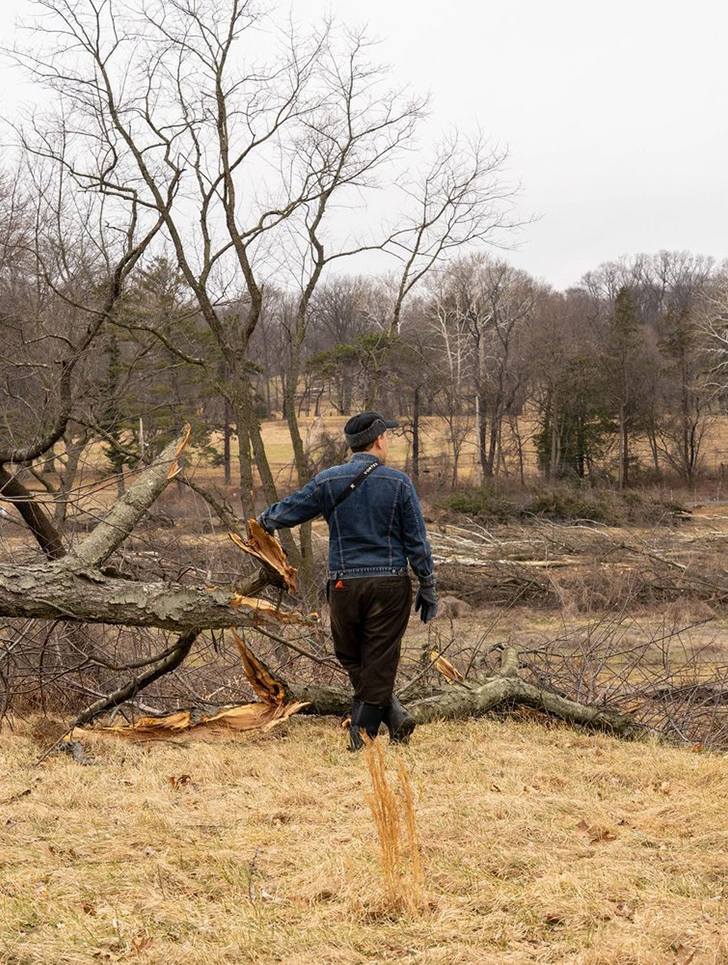When news first broke of the catastrophic failure of a strip of I-95 this weekend, many initial reactions bouncing around the internet were classic Philly culture. Funny T-shirts were made; people sporting local long-‘O’ accents were interviewed; jokes about nearby Four Seasons Total Landscaping abounded.
This is so Philly seemed to be a consensus take.
But the joking stopped and circumstances turned tragic when responders pulled from the rubble the body of the tanker truck driver whose vehicle appears to have crashed and ignited the inferno. Adding to the misery were reports of struggling local businesses and jammed commutes — and word that it might be months, not weeks, before things return to normal.
Still, some are now wondering whether there might just be another classic Philly storyline — the triumph of an underdog — to be found amidst all the bad news. And it’s an underdog’s underdog indeed: SEPTA.
“I think this is like a blessing in disguise for SEPTA,” said Eliezer Fich, trustee professor of finance at Drexel’s LeBow College of Business, who has been analyzing the economic implications of the highway collapse. “There are many commuters that are going to at least temporarily start using SEPTA. And if they like the service, if they think it’s cost effective and time effective, they may continue using it even after the highway’s fixed.”
Across the digital landscape, transit advocates and enthusiasts have shared similar takes in recent days. Perhaps this could be SEPTA’s time to shine, helping to rehabilitate the reputation of the region’s public transit agency, which is beleaguered by criticisms over reliability, safety, decision making and labor disputes.
Just a few days after the incident, there is evidence that SEPTA is trying to answer the bell. In a Tuesday email to Grid, agency spokesperson John Golden said SEPTA is “working with City, state and federal officials to support travel through the City and region.” That includes increasing capacity on the Trenton, West Trenton and Fox Chase regional rail lines, which reach points northeast that parallel I-95’s path; adding extra trips for the Trenton line; increasing Market-Frankford line service to every six minutes during peak hours; and “deploying operations personnel and ambassadors to assist customers.”
Significantly, Golden added that SEPTA had already seen an increase in ridership on “various” regional rail lines but did not yet have specific data to share. A WHYY report pegged a 12% increase Monday on the three lines SEPTA has bolstered.
Frederick Steiner, dean of University of Pennsylvania’s Weitzman School of Design, said he has also seen positive signs. During a Sunday press conference, Steiner noted that Pennsylvania Governor Josh Shapiro said he’d reached out to his counterparts in New Jersey and Delaware. Also at the press conference was SEPTA general manager Leslie Richards, who worked with Shapiro when both were Montgomery County commissioners. Steiner wonders if maybe all of that collaboration could result in even broader boosts to public transit, using the Amtrak service from Washington D.C. to Boston or fostering better connections with NJ Transit to help with more widespread fallout from the closure.
But also emerging in the days since the collapse are the usual cracks in SEPTA’s foundation. Among the most noticeable: delays of up to 20 minutes or more for various trains on the Trenton regional rail line, the service most adjacent to the shuttered stretch of I-95, including for mechanical issues, police activity and a shortage of operators and staffing. Not the best first impression for former I-95 commuters who are new to the train.
Connor Descheemaker, coalition manager for Transit Forward Philadelphia, says this shows that the roots of SEPTA’s problems are too deep to be dug up overnight, even in the moments when the system is needed most.
“I would love for this to be the first day of the rest of everyone’s life,” Descheemaker said. “[But] if we want to attract new riders, and convert people who previously had been driving on I-95, then we need to have a reliable, affordable and accessible service.”
Descheemaker says some of that can be accomplished in-house by SEPTA, by using money more wisely, focusing on increasing rider satisfaction and building and maintaining a reliable workforce through supporting labor unions and local recruitment efforts.
But Descheemaker also says the agency is financially constrained, and points to Harrisburg, where House Bills 902 and 1307 would give SEPTA additional authority to raise funds locally, rather than being subject to the whims of state and federal funding. And with Shapiro’s emergency declaration opening the door for additional emergency funding from Harrisburg and Washington, Descheemaker says they’ll be watching to see if any funds flow to SEPTA.
Thus, Descheemaker shifts the focus of whether SEPTA can rise to the occasion — now and in the future — away from easy criticism of a local agency and into a wider and more collective problem-solving effort.
That’s a tall order for sure, but maybe, just maybe, the kind of thing that can start rewriting Philly’s story and healing the hard-luck psyche of its residents.
“We can’t just keep thinking, ‘Oh it can’t happen, because we’re Philadelphia.’ That’s insulting to Philadelphians,’” Descheemaker said. “We deserve more and we deserve better.”









